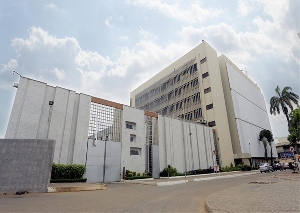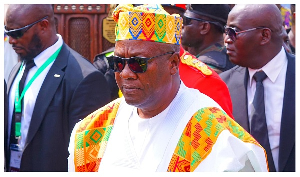The Bank of Ghana’s latest Collateral Registry report for the fourth quarter of 2023 reveals a significant decrease in the total value of secured loans granted and registered by banks and Specialized Deposit-taking Institutions (SDIs).
Compared to the same period in 2022, there has been a notable 54.9 percent decline, with the total value standing at GH¢5.9billion, down from GH¢13.2billion in Q4 2022.
Banks contributed GH¢4.5billion to the total secured loans in Q4 2023, reflecting a steep 63 percent drop from the GH¢12.3billion recorded in the previous year. This decline hints at a broader trend of credit slowdown in 2023, driven by strategic portfolio reallocation by banks on the back of risk aversion.
In contrast, SDIs experienced an increase, recording a total of GH¢1.4billion in secured loans for Q4 2023, marking a notable 53 percent rise from GH¢918.7million in the same period in 2022.
This report sheds light on the impact of the risk aversion among financial institutions on secured loans during the period while investment in government short-term securities have seen massive increase.
Breaking down the sectoral distribution of secured loans, the commerce and finance sector emerged as the top recipient, commanding a significant 43.3 percent share in Q4 2023. The services sector followed with a 20 percent share, while the manufacturing, mining and quarrying, and construction sectors claimed 11.7 percent, 8 percent and 6.1 percent shares, respectively. On the flip side, agriculture, forestry and fishing, along with several other sectors, lagged behind, receiving lower shares of secured loans.
This sectoral breakdown provides insights into the industries that are more actively seeking secured loans and the sectors that may need increased financial support.
Examining the distribution of secured loans by institutions, banks maintained their position as the primary contributors, holding a 76.3 percent share in Q4 2023. However, this marks a decrease from the 93 percent share recorded in the same quarter of the previous year. Other institutions, including savings and loans, rural and community banks (RCBs) and microfinance companies, saw increases in their respective shares. This hints at a diversification in the sources of secured loans, showcasing a broader spectrum of financial institutions playing a role in lending.
The average lending rates for secured loans varied across institutions. Leasing companies stood out with the lowest rate at 24.4 percent in Q4 2023, down from 35.5 percent in Q3 2023 but up from 16.3 percent in Q4 2022. Finance and leasing companies recorded a rate of 27.4 percent, while banks increased their average lending rate to 28.8 percent in Q4 2023, compared to 22.3 percent in the same period of 2022. Micro credit companies, rural and community banks, and savings and loans companies also showed fluctuations in their average lending rates, indicating a dynamic lending environment.
Analysing secured loans by borrower type, the report revealed that large private enterprises maintained their dominance, accounting for 60.3 percent of the total in Q4 2023, although experiencing a decrease from 82.3 percent in Q4 2022. Individual borrowers saw an increase, securing a 20.4 percent share, up from 7.7 percent in the previous year.
The report notes that private enterprises – SMEs and micro businesses – also witnessed an uptick in their shares, suggesting a diversification in the borrower landscape. In contrast, government institutions (MDAs) received the smallest share of secured loans, indicating a minimal role in the lending dynamics during the review period.
Business News of Sunday, 18 February 2024
Source: thebftonline.com

















